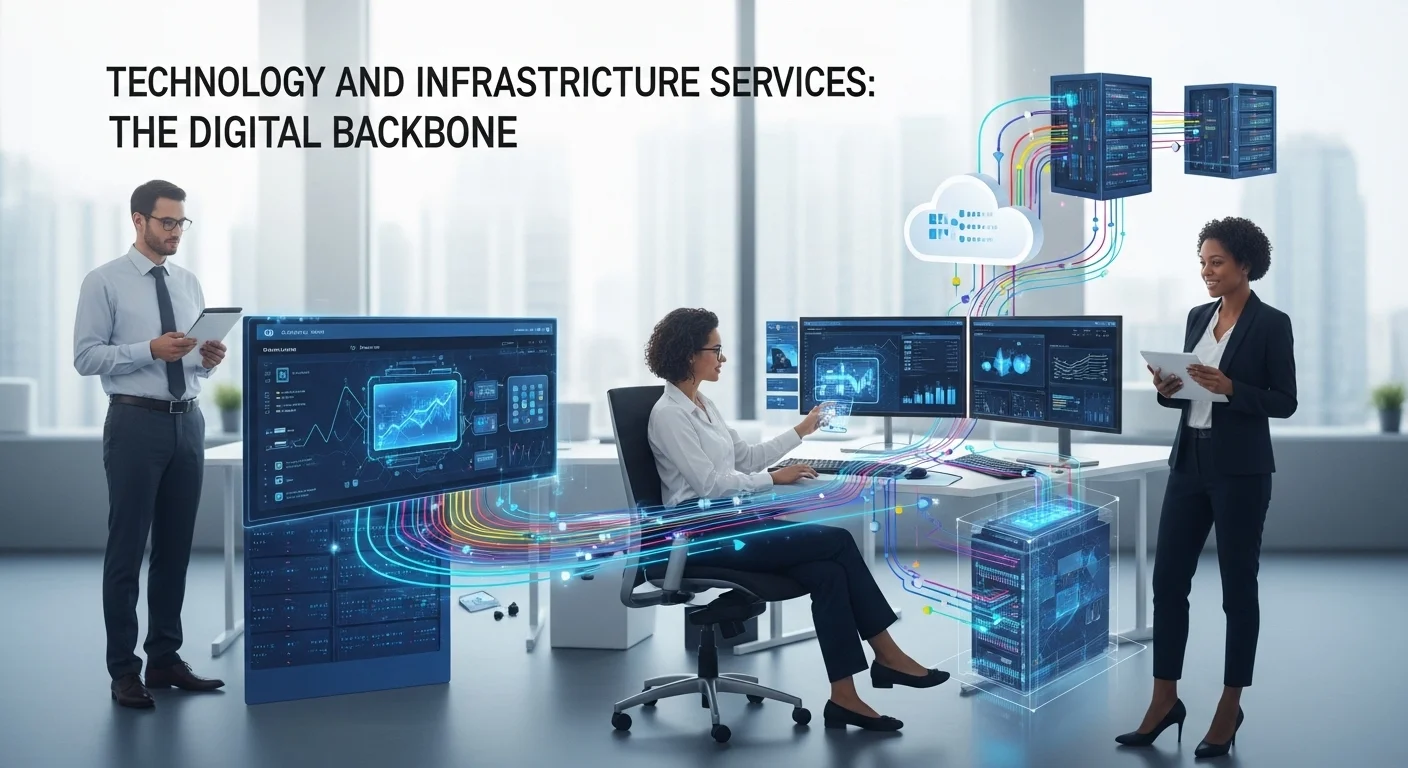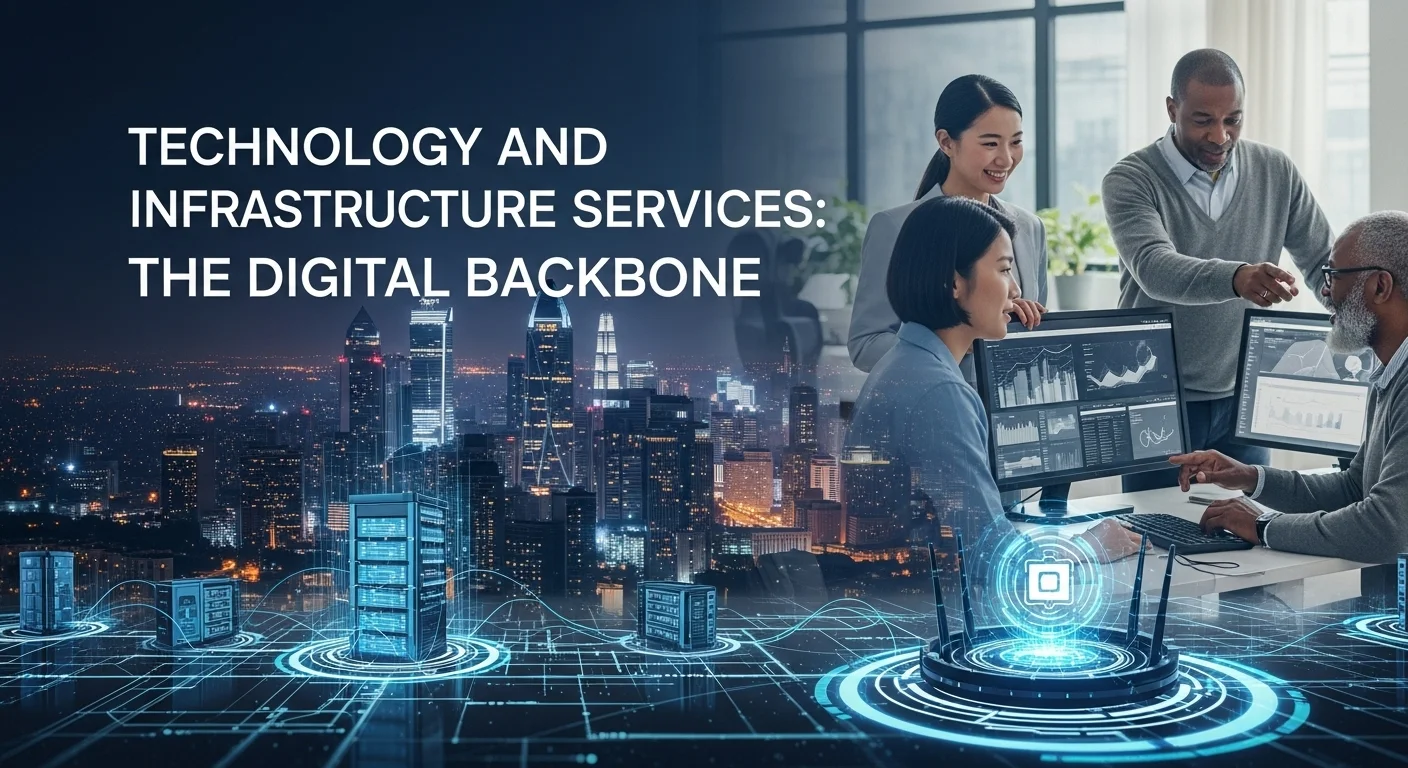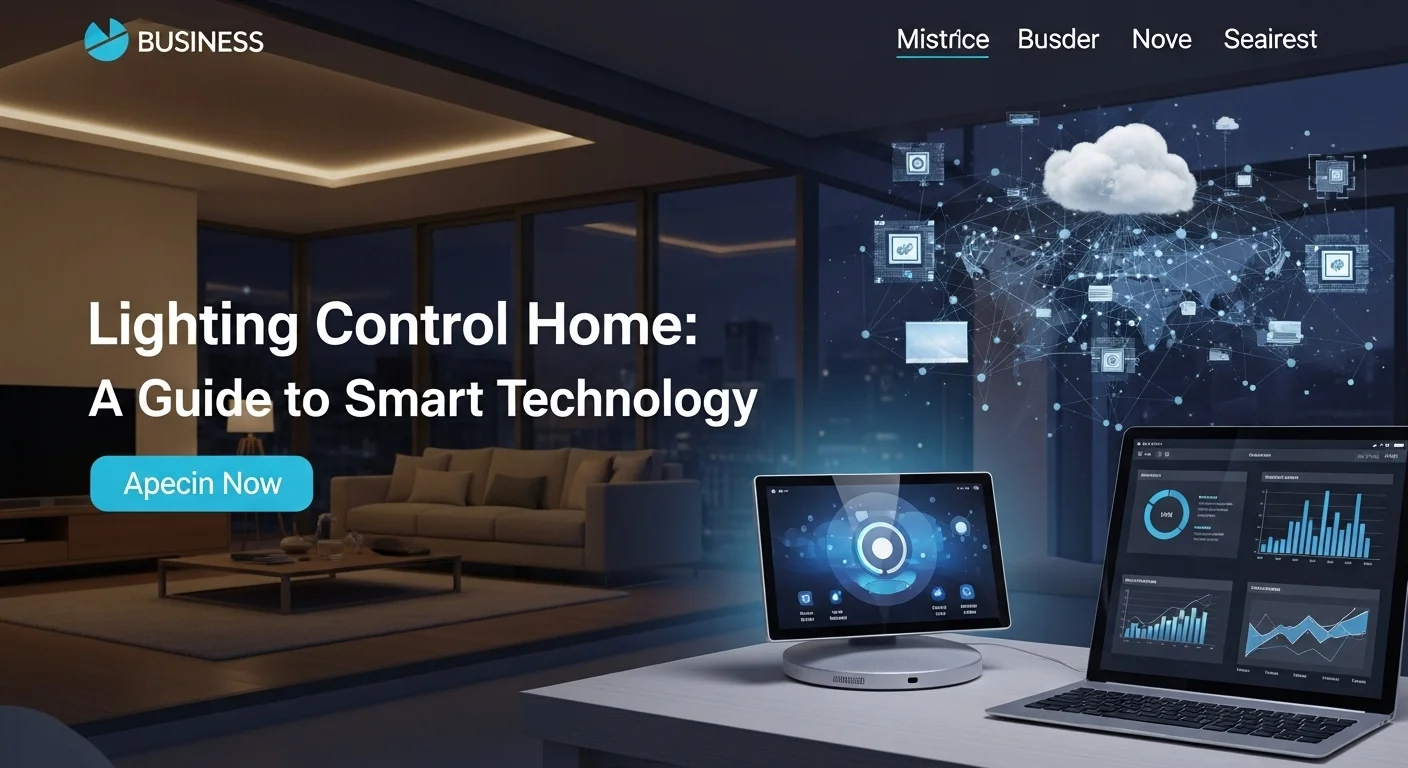Your Guide to IT Infrastructure Services: Building Your Business's Digital Foundation

Executive Summary
Think of IT infrastructure as the hidden foundation of a house. You don't see it, but everything rests on it. In my years in tech, I've seen businesses struggle with clunky, expensive server rooms. But things have changed dramatically. Today, with cloud infrastructure services, that power is available to everyone, on-demand. This guide is my way of breaking it all down for you. We'll walk through what these services are, explore the big players like Google Cloud, and figure out whether a public, private, or hybrid cloud is the right fit for you. It's not just about tech; it's about making smart decisions that save money, boost security, and help your business thrive. Let's build a solid foundation together.
Table of Contents
Table of Contents
- What Are IT Infrastructure Services and Why Do They Matter?
- The Pillars of Modern Infrastructure
- Understanding the Cloud Models: IaaS, PaaS, and SaaS
- Choosing Your Cloud: Public, Private, and Hybrid
What Are IT Infrastructure Services and Why Do They Matter?
Let's be honest, the term 'IT Infrastructure Services' sounds pretty intimidating, right? For years, I pictured massive, humming server rooms, blinking lights, and a level of complexity reserved for giant corporations. In simple terms, it's just all the tech gear—the hardware, software, network resources, and services—that an organization needs to run. These services are what manage that foundation, making sure everything from your company's email to your customer-facing website works smoothly.
Not long ago, if you wanted to launch an application, you had to buy physical servers, find a place to store them, and hire a team to maintain them. It was a huge upfront cost and a massive headache. But the game has completely changed. We've moved into an era of cloud based infrastructure services. This means you can now 'rent' computing power over the internet from providers. This shift from buying everything yourself (a capital expense, or CapEx) to a pay-as-you-go model (an operational expense, or OpEx) has been revolutionary. It's given small businesses and startups access to the kind of powerful technology that was once only available to the big players, allowing anyone with a great idea to scale and compete.
The Pillars of Modern Infrastructure
You can't overstate how crucial a solid infrastructure is. It’s the digital backbone of any company today. Think about it—it supports everything you do, from internal chats to analyzing sales data. In a world where every business is trying to get ahead with technology, you need to be fast. You need to launch new features, understand your customers, and grow without being held back by your tech.
This is where modern infrastructure services are a superpower. Imagine you run an online store. During the holidays, traffic explodes. In the old days, you’d have to buy extra servers that would sit idle for the rest of the year. What a waste! Today, with the cloud, you can instantly scale up your e-commerce platform to handle the rush and then scale right back down when things quiet down. You only pay for what you use. This elasticity is a game-changer. Beyond that, a solid infrastructure is vital for keeping your business running, no matter what. Top cloud providers have built-in protections against failure and offer security measures that would be incredibly expensive for a single company to build on its own. They have teams of experts dedicated to stopping cyber threats, which means you get to benefit from world-class security without having to become a security expert yourself.
Understanding the Cloud Models: IaaS, PaaS, and SaaS
To really get a handle on this, you need to know about the three main cloud service models. I like to use a pizza analogy to explain them: IaaS, PaaS, and SaaS. They just represent different levels of service.
- Software as a Service (SaaS): This is like ordering a pizza delivered to your door. It’s ready to eat. You don’t worry about the kitchen, the oven, or the ingredients. You just enjoy the final product. Think Google Workspace or Netflix.
- Platform as a Service (PaaS): This is like getting a take-and-bake pizza. The provider gives you the dough, sauce, and cheese (the platform), but you get to add your own toppings (your code) and bake it yourself. It gives developers a place to build and run apps without managing the underlying hardware.
- Infrastructure as a Service (IaaS): This is our focus. It's like getting the flour, yeast, tomatoes, and cheese delivered to your kitchen. The provider gives you the fundamental ingredients—servers, storage, and networking—but you're in charge of building the pizza from scratch. You manage the operating system, the software, and your data. This model offers the most flexibility and control, making it the true foundation of cloud based infrastructure services.
Choosing Your Cloud: Public, Private, and Hybrid
Once you decide on IaaS, you have to choose how it's delivered. Think of it like deciding where to live.
Public Cloud Infrastructure Services
The public cloud is like renting an apartment in a huge, feature-rich building. The building is owned by a landlord (like Amazon Web Services, Microsoft Azure, or Google Cloud), and you share amenities with other tenants. It’s incredibly scalable, you pay as you go, and you get access to a global network. I've seen startups go from an idea to a global service in months using the public cloud. A great example is the google cloud infrastructure as a service, which lets you build on the same powerful network that runs Google Search and YouTube.
Private Cloud Infrastructure
A private cloud is like owning your own private house. It’s dedicated entirely to you. You have maximum control and security, which is often a must for industries with strict data rules, like banking or healthcare. While it offers more control, owning a house usually means more upfront cost and responsibility for maintenance compared to renting an apartment.
Hybrid Cloud Infrastructure Services
This is becoming the most popular choice because it offers the best of both worlds. It's like owning your house (private cloud) but also renting a flexible storage unit (public cloud) for things that don't fit or that you only need sometimes. Businesses often keep their most sensitive data in their private cloud but use the public cloud's massive power for big data analysis or to handle unexpected traffic spikes. This hybrid cloud infrastructure services model gives you ultimate flexibility, allowing you to place your digital assets in the most logical and cost-effective place. It's a smart, practical approach for almost any modern business.

Complete Guide to Infrastructure Services in Technology and Business Solutions
Choosing your infrastructure is one of the most critical business decisions you'll make. It affects your budget, your team's agility, and your ability to innovate. It's not just an IT problem to solve; it's a strategic move. The good news is the options have never been better. The landscape is dominated by a few giants who provide incredible public cloud infrastructure services, but there's a whole ecosystem of tools and strategies to help you succeed. Whether you're a startup sketching on a napkin or a global company rethinking your entire digital strategy, this guide is your roadmap. I've been in the trenches helping companies navigate this, and my goal here is to cut through the jargon. We'll look at the big players, talk about the real-world process of moving to the cloud, and help you pick the right path for your business.
Comparing the Titans: AWS, Microsoft Azure, and Google Cloud Platform
The world of public cloud infrastructure services is essentially a battle between three heavyweights. While they all offer similar core services, they each have a distinct personality and strengths. I've worked with all three, and here's my personal take.
Amazon Web Services (AWS)
Think of AWS as the veteran champion. They were first to market and have the most extensive list of services and the largest market share. Their platform is incredibly mature, reliable, and can do almost anything you can imagine. For many years, AWS was the default choice for startups because of its pay-as-you-go model and the sheer size of its community. The only catch? With so many services, its pricing can get complex, and I’ve seen teams get lost trying to optimize costs without the right expertise.
Microsoft Azure
Azure is the corporate powerhouse. Its greatest strength is its deep integration with the Microsoft software that so many businesses already use, like Office 365 and Windows Server. In projects I've worked on, I've seen teams choose Azure because their entire company already runs on Microsoft; it just makes sense. Azure is also a leader in the hybrid cloud infrastructure services space. They make it incredibly easy to blend your own data centers with their public cloud, which is a huge selling point for large, established companies that aren't ready to go 'all-in' on the public cloud just yet.
Google Cloud Platform (GCP)
GCP is the data and innovation wizard. While they came to the party a bit later, they've made huge strides by focusing on what Google does best: handling massive amounts of data, machine learning, and high-speed networking. The google cloud infrastructure as a service runs on the same backbone that powers Google's own products, which is a testament to its performance. From my experience, teams that are heavily focused on data analytics or building modern applications with technologies like Kubernetes often gravitate towards GCP. They're also known for having more customer-friendly pricing, with things like per-second billing that can make a real difference to the bottom line.
Technical Methods: Migration, Orchestration, and Management
Okay, so you've picked a provider. Now what? Getting into the cloud isn't magic; it's a technical process that requires a plan.
Cloud Migration Strategies
Moving your existing applications to the cloud is like moving to a new house. You have a few options: you can just pack up your boxes and move them (a 'lift-and-shift'), which is fast but might not be the best fit for the new place. Or you can take the opportunity to declutter and refit your furniture for the new space (refactoring), which takes more effort but gives you a much better result in the long run. The right strategy depends on your goals, budget, and timeline.
Infrastructure as Code (IaC)
This sounds technical, but the idea is simple and powerful. Instead of manually clicking buttons in a web console to set up your servers and networks, imagine writing a 'recipe' for your perfect tech setup. That's Infrastructure as Code. You use tools like Terraform to write a configuration file, and that code builds your environment automatically. The beauty of this is that it's repeatable, consistent, and less prone to human error. I've seen it save teams countless hours and prevent major headaches.
Orchestration and Containerization
Modern applications are often built as a collection of small, independent services (microservices). Managing all these little pieces can be a nightmare. That's where containers (like Docker) and orchestration (like Kubernetes) come in. Containers bundle up a piece of code and all its dependencies so it can run anywhere. Kubernetes is like the conductor of an orchestra, making sure all those containerized parts work together in harmony, handling scaling, and healing themselves if something goes wrong. It's the standard way to run complex applications today.
Business Techniques: Choosing the Right Model and Ensuring Governance
The best tech in the world won't help if it's not aligned with your business strategy.
Choosing Your Cloud Model
The decision between public, private, or hybrid cloud is deeply strategic. If you're starting fresh, going all-in on a public cloud infrastructure services provider is often the fastest and most flexible path. If you're in a highly regulated industry, a private cloud might be non-negotiable. But for most existing businesses I've worked with, a hybrid cloud infrastructure services strategy makes the most sense. It lets you leverage the cloud's benefits while keeping some things on-premise, giving you a practical and flexible path forward.
Cloud Governance and Cost Management
The ease of spinning up a new server in the cloud is amazing, but it's also dangerous. I'll never forget the first time a client saw their cloud bill after a developer accidentally left a powerful test environment running over a long weekend. Ouch. You need a governance plan. This means setting rules for who can create resources, using tags to track costs by project or department, and having clear security policies. All the major providers have tools to help you monitor spending, but it requires discipline. Proactively managing costs by shutting down unused resources and choosing the right pricing plans is a continuous process that is absolutely vital for success.

Tips and Strategies to Improve Your Technology Experience with Infrastructure Services
Getting your infrastructure into the cloud is just the beginning. The real magic happens when you continuously optimize and secure it. This isn't a 'set it and forget it' situation. The cloud is dynamic, and staying on top of it is how you turn your infrastructure from a cost center into a true competitive advantage. I’ve learned these lessons—sometimes the hard way—over many projects. Here are my most important tips for managing your cloud environment effectively, keeping it secure, and making sure it's ready for whatever comes next.
Best Practices for Cloud Security
One of the first things to understand is that in the cloud, security is a shared job. The provider secures the building (the physical data centers), but you are responsible for locking your own apartment door (your data, configurations, and access). Here's how to be a responsible tenant.
Implement a Zero-Trust Architecture
The old idea of having a strong wall around your network is outdated. In today's world, you have to assume that threats could come from anywhere, even inside your network. A Zero-Trust model means you trust no one by default. It's like a strict bouncer at a club who checks everyone's ID every single time they try to enter, even if they were just inside a minute ago. This means using strong identity controls, requiring multi-factor authentication (MFA) for everyone, and giving people the absolute minimum access they need to do their jobs.
Data Encryption and Protection
Your data is your most precious asset. You must protect it, period. This means encrypting it both when it's being stored (at rest) and when it's moving across the network (in transit). All major cloud infrastructure services providers make this easy, so there's no excuse not to do it. Use their key management services to control your encryption keys and look into tools that can help prevent sensitive data from leaving your environment accidentally.
Continuous Monitoring and Threat Detection
You can't protect what you can't see. You need to have eyes on your entire cloud environment. Use the native logging tools provided by your cloud platform to track everything that happens. Then, feed that information into systems that can analyze it, spot unusual activity, and alert you to potential security incidents in real time. Regularly scanning for vulnerabilities is like a routine health check-up for your infrastructure; it helps you find and fix problems before they become critical.
Strategies for Cost Management and Optimization
Cloud bills can be a shock if you're not careful. But with the right strategy, you can keep them under control and get the most bang for your buck.
Right-Sizing and Resource Automation
The most common way people waste money in the cloud is by paying for more power than they need. Teams often set up a server for the busiest possible day and then forget about it. Use your cloud's monitoring tools to see how much of your resources you're actually using. If a server is only using 10% of its capacity, move to a smaller, cheaper one! Even better, automate it. Set up scripts to shut down development and test environments at night and on weekends. It's like turning the lights off when you leave a room—a simple habit that saves a lot of money.
Leverage Pricing Models and Spot Instances
Don't just pay the default on-demand price. If you know you're going to be running a server for a year or more, commit to it using Reserved Instances or Savings Plans. The discounts can be massive—over 70% in some cases. For tasks that can be interrupted, like batch processing or some kinds of data analysis, look into Spot Instances. This is spare capacity that cloud providers sell at up to a 90% discount. The catch is they can take it back with little notice, but for the right workload, it's an incredible way to save money.
Establish a FinOps Culture
FinOps is a fancy word for a simple idea: get your finance and tech teams talking to each other. In the cloud, spending isn't a fixed, predictable cost anymore. It's variable. A FinOps culture means everyone, especially developers, is aware of the cost implications of their work. It's about creating dashboards so everyone can see where the money is going and empowering teams to make smart, cost-effective decisions.
Ensuring High Availability and Disaster Recovery
Your business-critical applications need to stay online, even when things go wrong. Building for resilience is not optional.
Architect for Failure
This is a core principle of good cloud design. Assume things *will* break. It's not pessimism; it's smart engineering. Don't run your entire application in one data center. Distribute it across multiple 'Availability Zones' (which are separate data centers in the same region). That way, if one entire building has a problem, your application keeps running in the others. This is a fundamental feature of any major platform, including the google cloud infrastructure as a service.
Implement a Robust Backup and Recovery Plan
Backing up your data is crucial, but it's only half the battle. You have to test your ability to restore it. I've seen companies with perfect backups discover during a real disaster that their recovery process was broken. Don't let that be you. Automate your backups and regularly practice restoring them. For maximum protection, consider replicating your data to an entirely different geographic region. This can be a lifesaver in the event of a major regional outage.
Future-Proofing Your Infrastructure
The tech world moves fast. Keeping an eye on what's next will help you make decisions today that will pay off tomorrow.
Embrace Serverless and Edge Computing
Serverless computing is a model where you can run your code without ever thinking about a server. You just upload it, and the cloud provider handles everything else, charging you only for the split seconds your code is actually running. It's incredibly efficient. At the same time, Edge Computing is bringing processing power closer to where data is created—think IoT devices or smartphones. This reduces lag and is becoming essential for real-time applications.
Prepare for the Rise of AIOps
As our tech environments get more complex, especially in multi-cloud setups, humans can't keep up with all the data. AIOps uses Artificial Intelligence to monitor your systems, predict problems before they happen, and even automate fixes. It’s moving from a nice-to-have to an essential tool for managing modern public cloud infrastructure services at scale. To see how AI is changing the game, you can explore platforms like Google's AI platform.
By putting these strategies into practice, your journey with cloud based infrastructure services will be more than just a tech upgrade. It will become a secure, efficient, and powerful engine for your business's future.
Expert Reviews & Testimonials
Sarah Johnson, Business Owner ⭐⭐⭐
The information about Infrastructure Services is correct but I think they could add more practical examples for business owners like us.
Mike Chen, IT Consultant ⭐⭐⭐⭐
Useful article about Infrastructure Services. It helped me better understand the topic, although some concepts could be explained more simply.
Emma Davis, Tech Expert ⭐⭐⭐⭐⭐
Excellent article! Very comprehensive on Infrastructure Services. It helped me a lot for my specialization and I understood everything perfectly.



